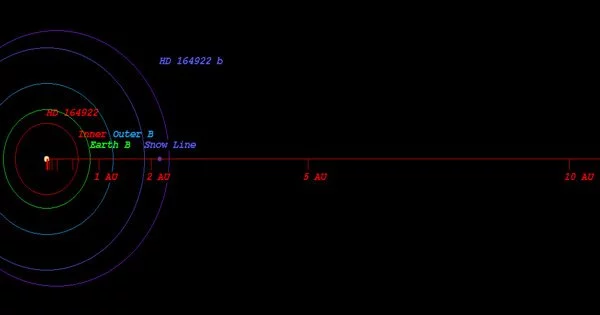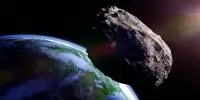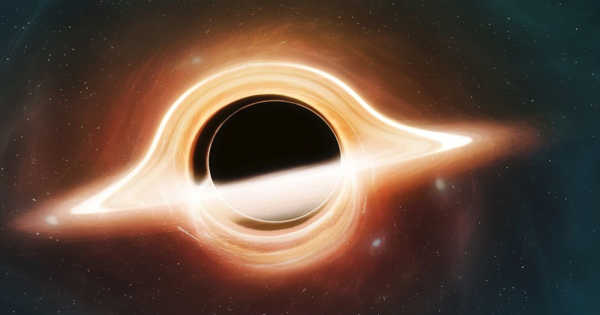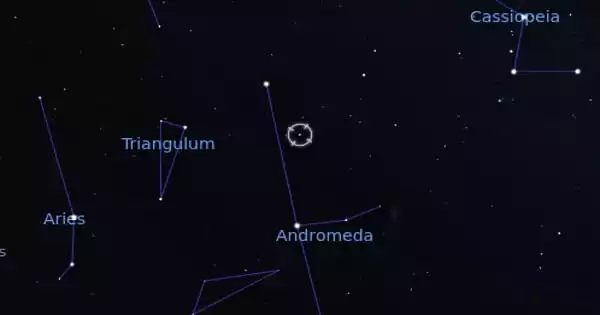HD 164922 b is a gas giant exoplanet in the habitable zone of a G-type star. It is an exoplanet that orbits the star HD 164922 in the constellation Hercules about 72 light-years from Earth. It has a mass of 0.36497 Jupiters, takes 3.3 years to complete one orbit around its star, and is 2.16 AU away from it. Its inclination is unknown, therefore its true mass could be far bigger than the radial velocity lower limit of 0.36 Jupiter masses.
In addition, unlike most other long-period extrasolar planets, the planet has a low eccentricity – 0.05 – almost the same as Jupiter and Saturn in the Solar System. The exoplanet was found by using the radial velocity method, from radial-velocity measurements via observation of Doppler shifts in the spectrum of the planet’s parent star. Its discovery was announced in 2005.
Mass, radius, and temperature
HD 164922 b is a gas giant, an exoplanet with a radius and mass similar to Jupiter and Saturn. The temperature is 159 K (−114 °C; −173 °F). Based on its similar mass to Saturn, it has an estimated mass of roughly 0.36 MJ and a possible radius of around 8 REarth.
HD 164922 b is an exoplanet that orbits the star HD 164922, which is located approximately 72.2 light-years (22.1 pc) from our Solar System. Its discovery was made public in 2006. HD 164922 has an apparent magnitude of 7.0 and an absolute magnitude of 5.3. It is 0.9 times more massive and 1.0 times larger than our Sun. The surface temperature is 5293 with its spectral types of G9V In this planetary system, the extrasolar planet HD 164922 b orbits around the star HD 164922 every 1207.0 days with its orbital distance of 2.16 AU.
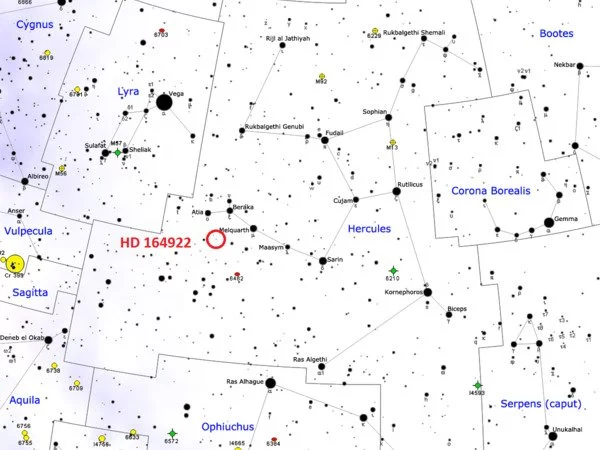
Host star
The planet orbits a (G-type) star named HD 164922. The star has a mass of 0.87 M☉ and a radius of around 0.99 R☉. It has a temperature of 5293 K and is 13.4 billion years old. In comparison, the Sun is about 4.6 billion years old and has a temperature of 5778 K. The star is metal-rich, with a metallicity ([Fe/H]) of 0.16, or 144% of the solar amount. This is particularly odd for a star as old as HD 164922. Its luminosity (L☉) is 70% of the solar luminosity.
The star’s apparent magnitude, or how bright it appears from Earth’s perspective, is 7.01. Therefore, HD 164922 is too dim to be seen with the naked eye but can be viewed using good binoculars.
Orbit
HD 164922 b orbits its star every 1,155 days at a distance of 2.1 AU (compared to Mars’s orbital distance from the Sun, which is around 1.5 AU). It receives only 15% of the sunlight as the Earth does from the Sun.
Discovery
The search for HD 164922 b began when its host star was chosen as an ideal target for a planet search using the radial velocity method (which measures a planet’s gravitational pull on its star by observing the resulting Doppler shift), as stellar activity would not overly mask or mimic Doppler spectroscopy measurements. It was also determined that HD 164922 is not a double system or a rapidly spinning star, both of which are common false positives when looking for transiting planets. The radial velocity fluctuations most likely suggested the presence of a planet, according to data analysis.
As a consequence, an estimated 12.9 MEarth planetary partner orbiting the star at a distance of 0.33 AU with an eccentricity of 0.07 was calculated. On June 30, 2016, the finding of HD 164922 b was reported in the online archive arXiv. Butler et al. 2006 discovered this planet. This was an on-the-ground discovery. The parameters given here were imported from the NASA Exoplanet Archive into the Open Exoplanet Catalogue.
